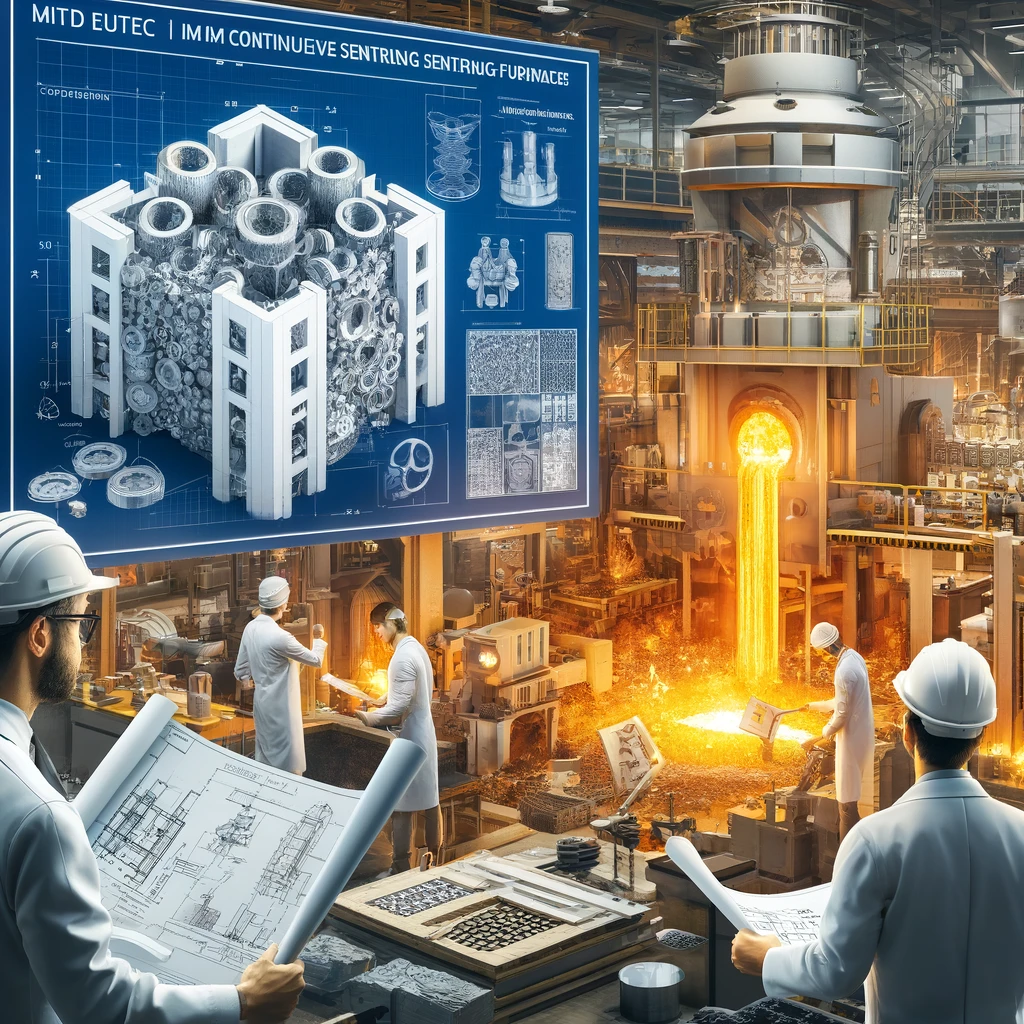
Navigating Technical Challenges in Producing Corundum-Mullite Setters for MIM Continuous Sintering Furnaces
Introduction
The production of corundum-mullite setters, essential for continuous sintering furnaces in Metal Injection Molding (MIM), poses unique technical challenges. These setters are pivotal for ensuring high-quality sintering of metal parts, but their production involves complex materials science and engineering processes. In this blog, we explore these challenges and how Moat City, a leader in advanced ceramic solutions, is addressing them to advance the MIM industry.
Complex Material Composition
The very composition that makes corundum-mullite ideal for high-temperature applications also introduces significant production challenges:
High Melting Point: Both corundum and mullite have high melting points, which necessitate the use of sophisticated and costly high-temperature kiln technologies for sintering these ceramics.
Uniformity in Material Quality: Achieving consistent material properties across batches can be challenging due to variations in raw material purity and the synthesis process. This variability can affect the performance and reliability of the setters.
Molding and Shaping Difficulties
The process of shaping corundum-mullite into setters is fraught with difficulties:
Brittleness: While corundum-mullite is incredibly durable under thermal stress, it is also brittle, making it susceptible to damage during the molding and machining processes.
Complex Geometries: MIM parts often require complex setter shapes to support specific designs and maximize furnace capacity. Achieving these intricate designs without compromising the structural integrity of the setters requires precision engineering.
Thermal Expansion Management
Managing the thermal expansion of corundum-mullite is critical, particularly because:
Mismatched Thermal Expansion: Different parts of the setter can experience different rates of thermal expansion, leading to stress and potential failure.
Thermal Shock Resistance: Rapid changes in temperature, typical in MIM processes, demand excellent thermal shock resistance, challenging to maintain consistently across production lots.
Innovative Solutions by Moat City
Moat City has been at the forefront of tackling these challenges through innovation and technology:
Advanced Material Synthesis: Moat City employs state-of-the-art synthesis techniques to improve the purity and consistency of the corundum-mullite used in their setters.
Precision Engineering: Utilizing advanced CAD and CAM technologies, Moat City designs setters that meet precise specifications, reducing the risk of structural failures due to design and manufacturing flaws.
Customized Thermal Solutions: By engineering the material compositions and geometries specifically for the thermal cycles of MIM furnaces, Moat City’s setters offer superior thermal shock resistance and longevity.
Future Directions
Looking forward, Moat City is investing in research to further enhance the properties of corundum-mullite. Innovations in nano-material additives and composite technologies hold promise for creating even more resilient and efficient setters.
Call to Action
For those in the MIM industry facing challenges with their sintering processes, turning to Moat City for advanced corundum-mullite setters can be a game-changer. Their commitment to quality and innovation ensures that their products not only meet but exceed the rigorous demands of continuous sintering applications.


Leave a Reply